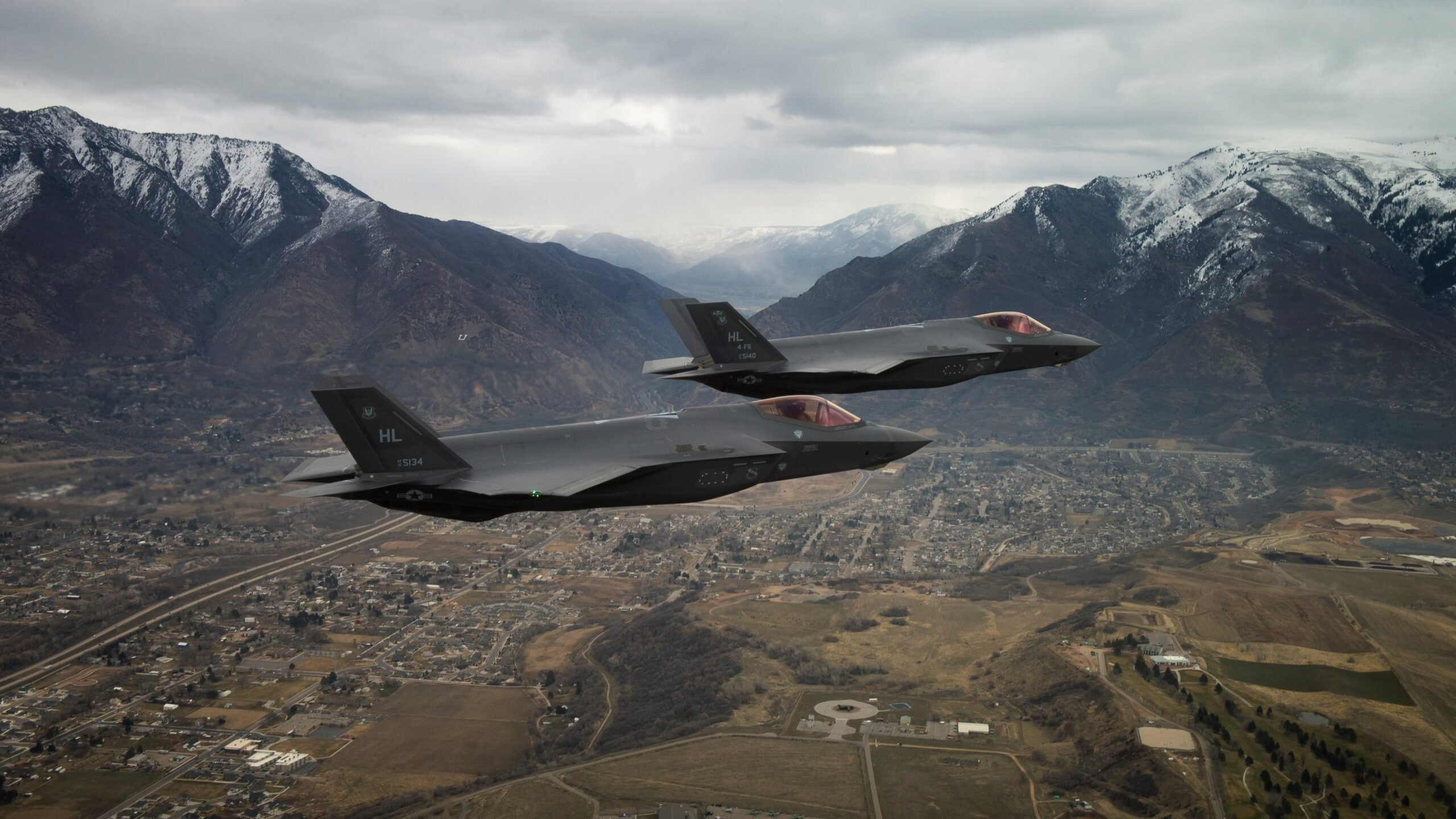
Two U.S. Air Force F-35A Lightning IIs, assigned to the 4th Fighter Squadron from Hill Air Force Base, Utah, fly over the base and the surrounding area on Feb 14, 2018. (U.S. Air Force/ Andrew Lee)
WASHINGTON — Canada today officially signed off on buying the F-35, putting to rest a near-decade of political turmoil over the stealthy fifth-generation fighter.
Minister of National Defence Anita Anand announced the closing of the agreement, in which Ottawa will procure 88 F-35A conventional take off and landing models for an estimated price tag of $19 billion Canadian (roughly $14.2 billion US). In a Twitter thread about the agreement, Anand called it “the largest investment” in Canada’s air force in three decades, replacing the aging fleet of CF-18 fighters.
“In today’s complex global environment, Canada requires a military that is flexible, agile and capable of responding to a variety of unforeseen situations. We are committed to ensuring that our current and future aviators have the most advanced equipment possible to do just that,” Anand said in a statement. “Canada requires a fighter fleet to contribute to the safety and security of Canadians and protect the sovereignty of one of the largest expanses of airspace in the world. We are thrilled to announce today that Canada has selected the F-35 as the fighter aircraft that will fill this important role.”
RELATED: Germany seals entry to F-35 club with $8.8B, 35-fighter plan
The MoD said in the announcement that first deliveries of the F-35 are “anticipated to begin in 2026, and we anticipate that we will reach Full Operational Capability with our entire fleet between 2032 and 2034.”
The statement also cited economic benefits for Canada to the tune of “$425 million annually to Canada’s gross domestic product and close to 3,300 jobs annually for Canadian industry and value chain partners over a 25-year period (direct and indirect).” While the statement does not say specifically where that economic impact would come from, Canada is part of the F-35’s global supply chain.
The decision to pick the F-35 was actually announced last March, but negotiations to get under contract took up the remainder of the year. Officials had been steadfast in saying that if F-35 prime contractor Lockheed Martin could not meet Canada’s terms on issues such as pricing, delivery assurances and risk reduction agreements, then Canada could make a deal on the Swedish runner-up Saab Gripen instead.
Politics has played a massive role in the story of Canada and the F-35. Originally agreed to as a sole-source deal by the government of Prime Minister Stephen Harper in 2010, the deal became such a flashpoint that it was a major plank of now Prime Minister Justin Trudeau’s Liberal party in its defeat of Harper. In fact, Trudeau rode in with a campaign pledge to cancel the buy, which did officially happen. However, in the re-compete, the F-35 seemingly emerged as the best option early on, and there was a sense among analysts that Canada would eventually return to the US-made jet.
“Canada is our friend and a close ally. Their decision to procure almost 90 jets underscores the value of the incredible F-35 Lightning II,” US Air Force Lt. Gen. Mike Schmidt, program executive officer for the F-35 Joint Program Office, said in a statement. “Through power-projection, the F-35 is at the tip of the spear for deterrence. Its forward presence will continue to ensure that potential adversaries choose diplomacy over armed conflict.”
“We are honored the Government of Canada has selected the F-35, and we look forward to continuing our partnership with the Royal Canadian Air Force and the Canadian defence industry to deliver and sustain the aircraft,” added Bridget Lauderdale, Lockheed Martin’s vice president and general manager of the F-35 program. “The selection of F-35 strengthens allied airpower in Canada, North America and around the world.”
Navy jet trainer fleet operations remain paused after engine mishap
One week after the incident, a Navy spokesperson says the service is continuing to assess the fleet’s ability to safely resume flight.


























